I seek to accomplish a few things in this post. First, it is good to set the record straight, lately distorted by a minor trad site, gloria.tv. Also, repeat something I’ve bashed away at for years, but haven’t bashed lately. Thirdly, pose a reminder about the times we live in.
This is the Oratory of the Caravita, in the clutches of the Jesuits, near to their great church Sant’Ignazio. Churches on this site have through history been in various hands and have been demolished and rebuilt. That’s how Rome is.
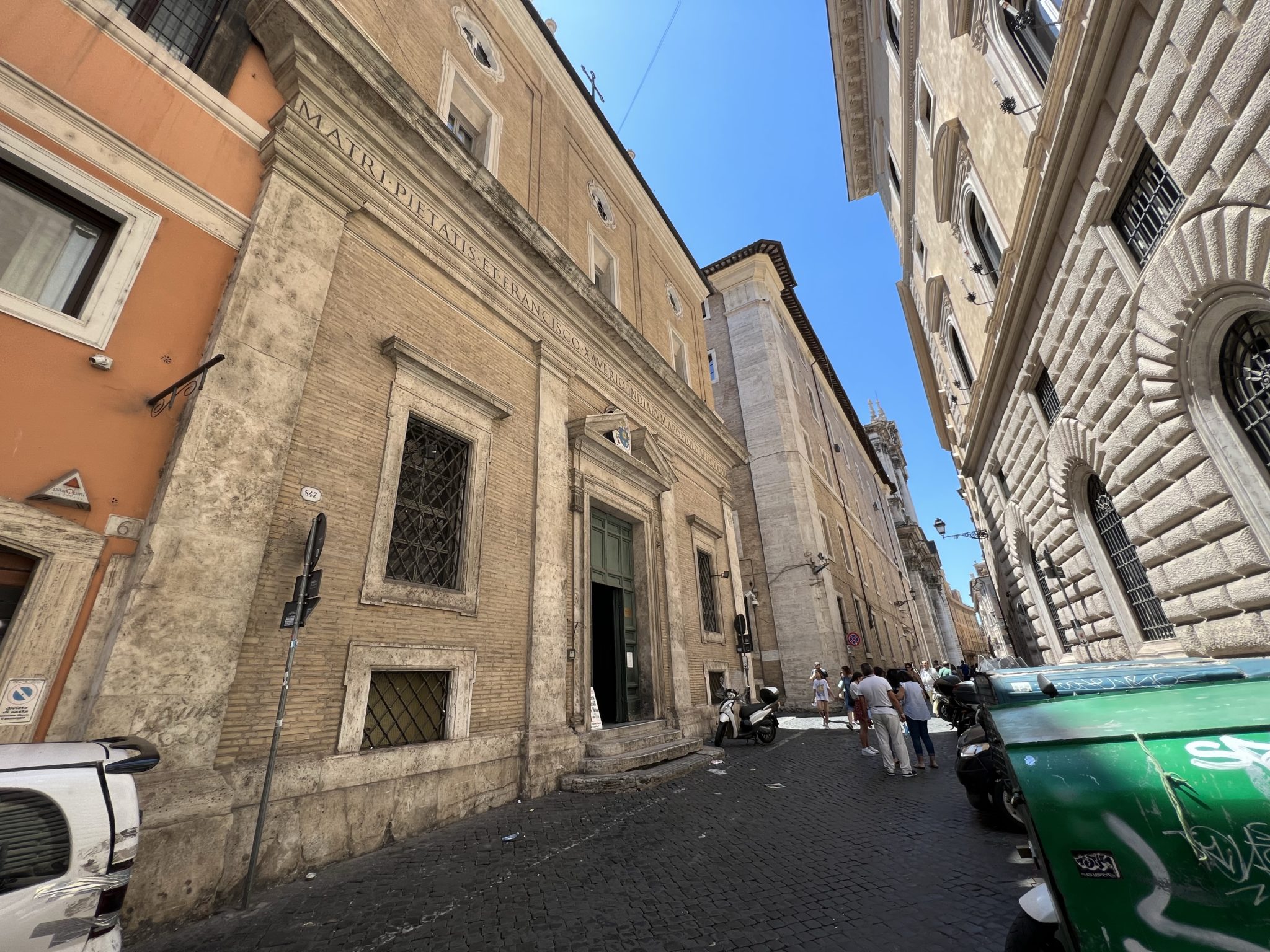
For some years now it has been used by the far-lib English speakers in Rome who like hyper-touchy-feely liturgy on their own terms. I used to stick my head in there once in a while on a Sunday just to see what was going on and who was there. It was a who’s who of that crowd, including journalists, and what was done in there … I wouldn’t do with a gun to my head.
I do not for a second doubt their sincerity. I think they’ve been over a long time bamboozled.
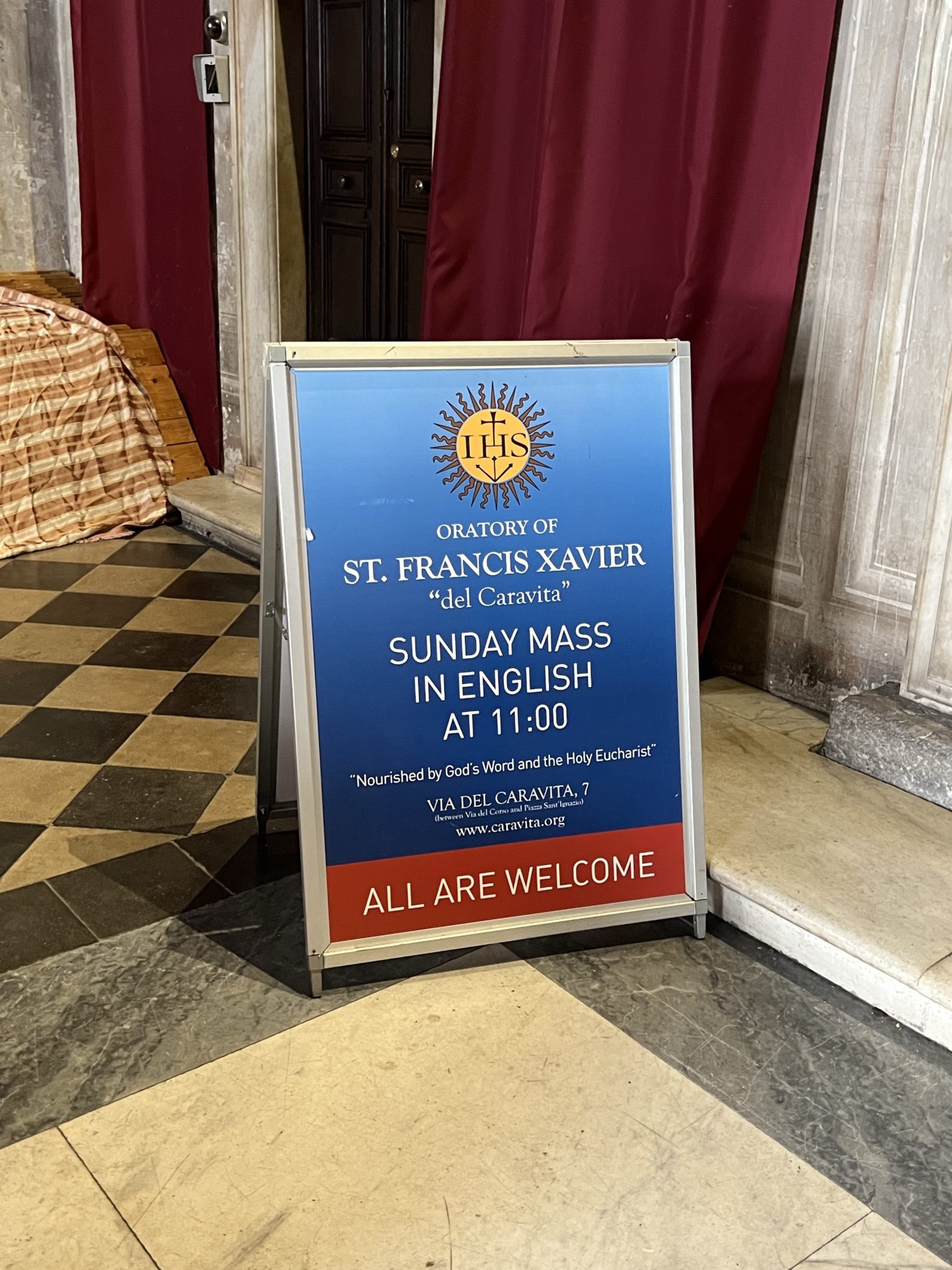
In the entrance, narthex to the place one spots a painting of St. Giovanni Battista de Rossi, a magnificent saint who had epilepsy and who performed great works of corporal and spiritual mercy in Rome and was beloved, called by some another St. Philip Neri.
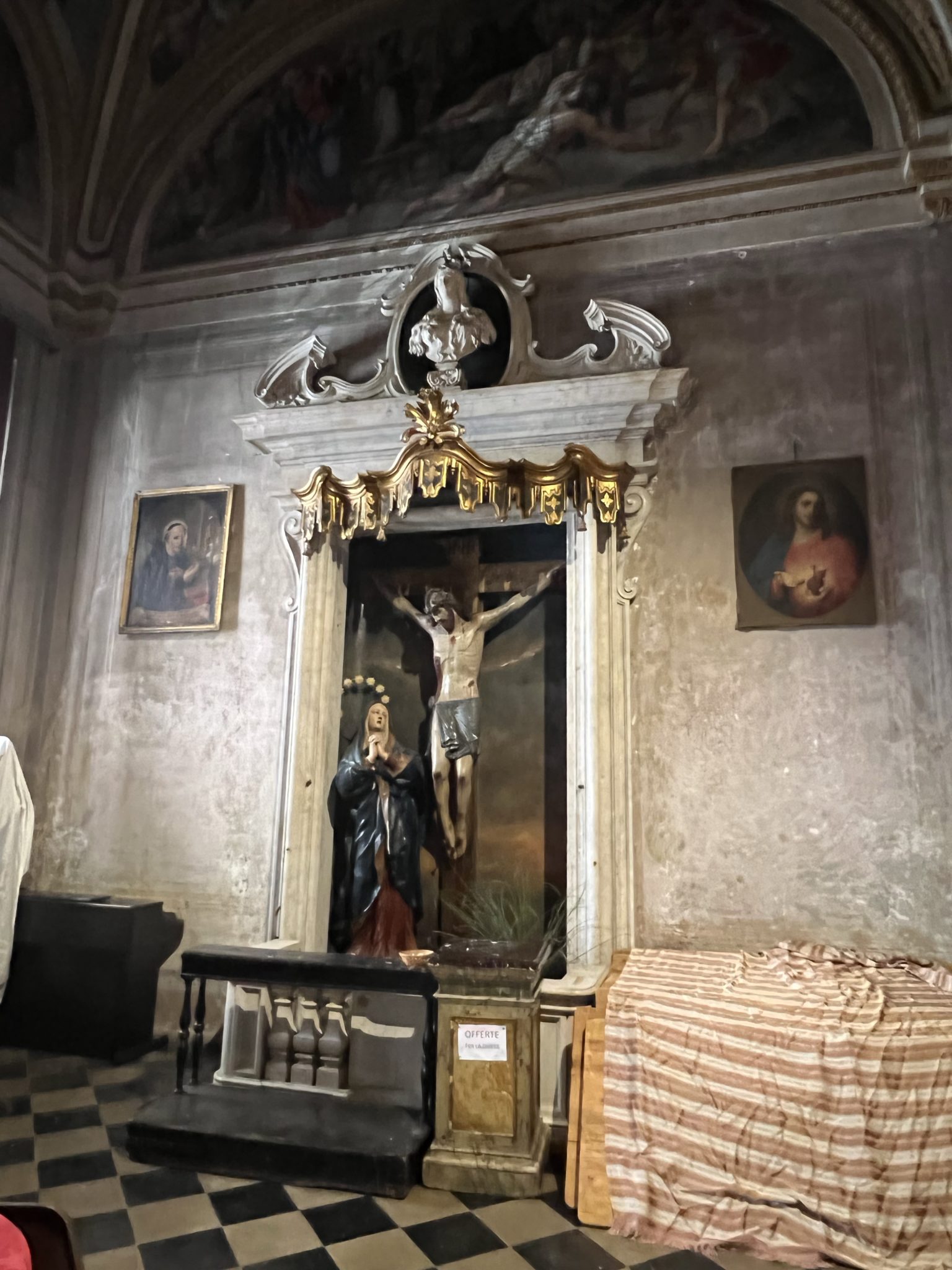
As his health declined and he became a well-known confessor, he relocated to Ss. Trinità dei Pellegrini, which today is Rome’s official Traditional parish, and my adoptive parish, for I’ve known that church well since the late 80s.

San G.B. died in 1763 and was buried in a side altar of Ss. Ss. Trinità. He was beatified by Pius IX and canonized by Pope Leo XIII. Eventually his body was moved to a church given his name on the periphery of the City.
Here is the inside the Caravita Oratory. “Caravita” could be a distortion of the family name of a Jesuit who was known for his work with the poor.
The first thing you ought to notice is that the whole of the church is encircled with stalls. That’s because this was a setting for activity of a Confraternity and it was a place for sacred concerts and oratories. The Oratory is dedicated to the Trinity and St. Francis Xavier.
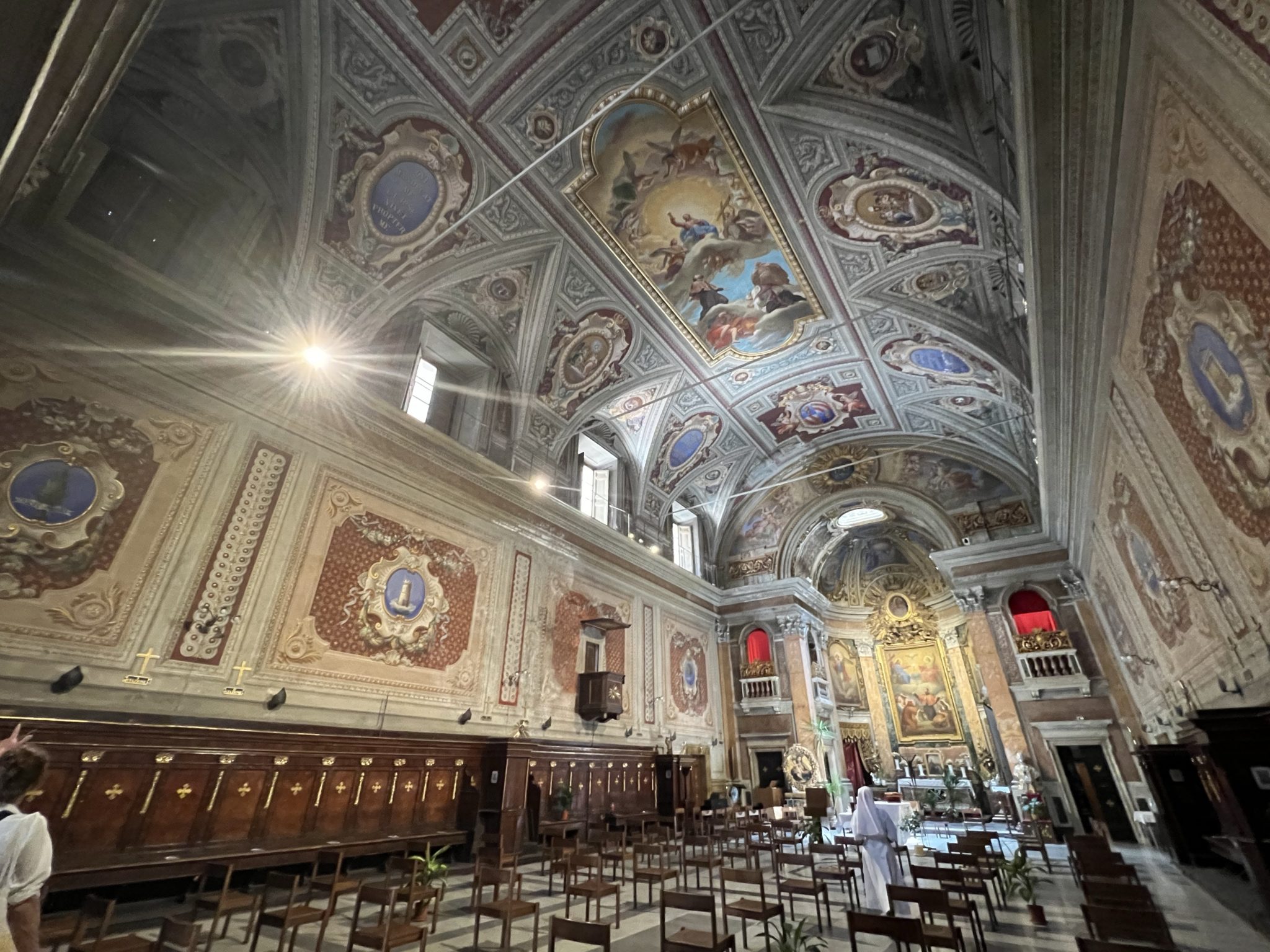
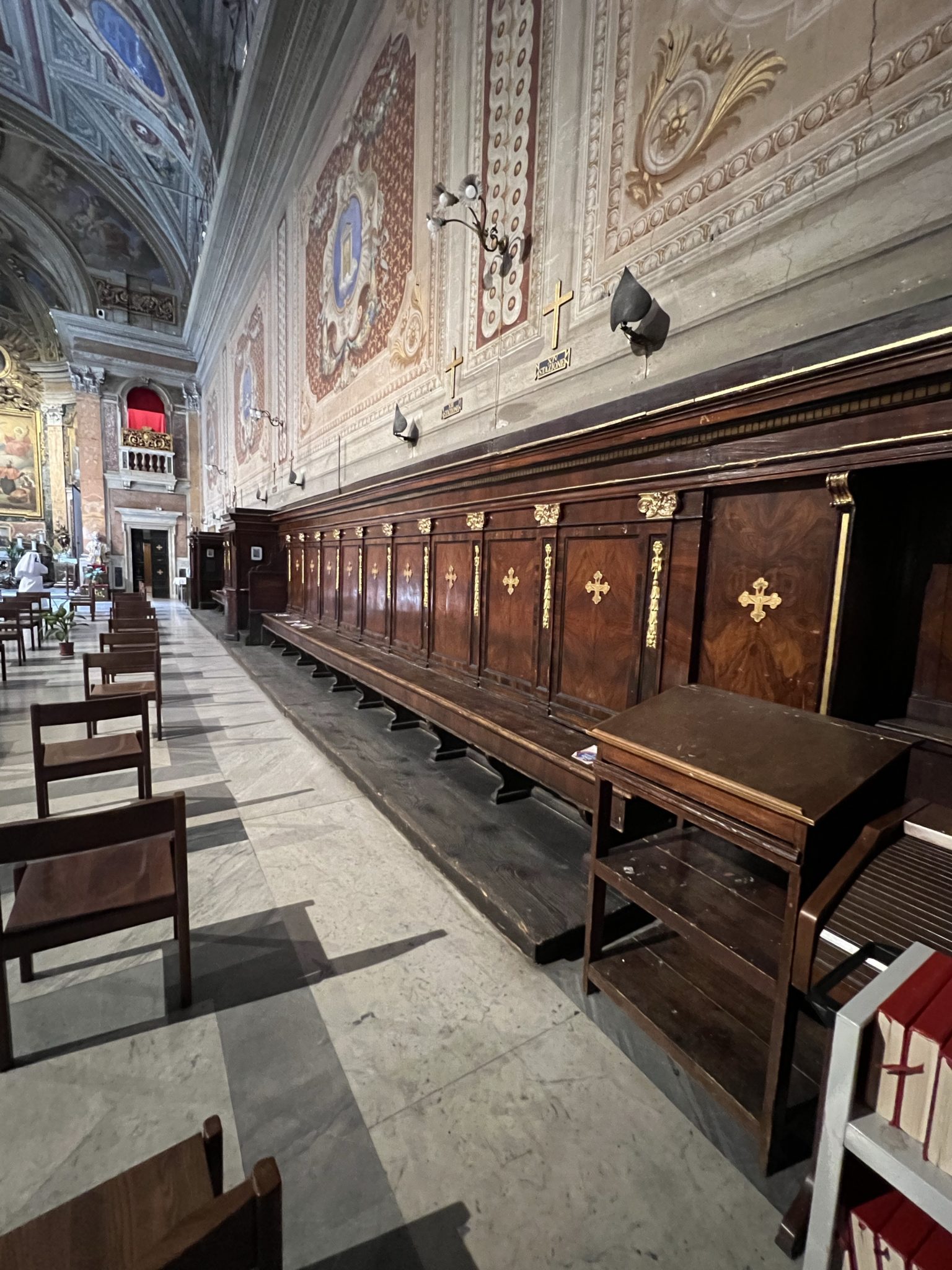
You can tell a lot about the thinking of the people who have charge of this little oratory by this photo.
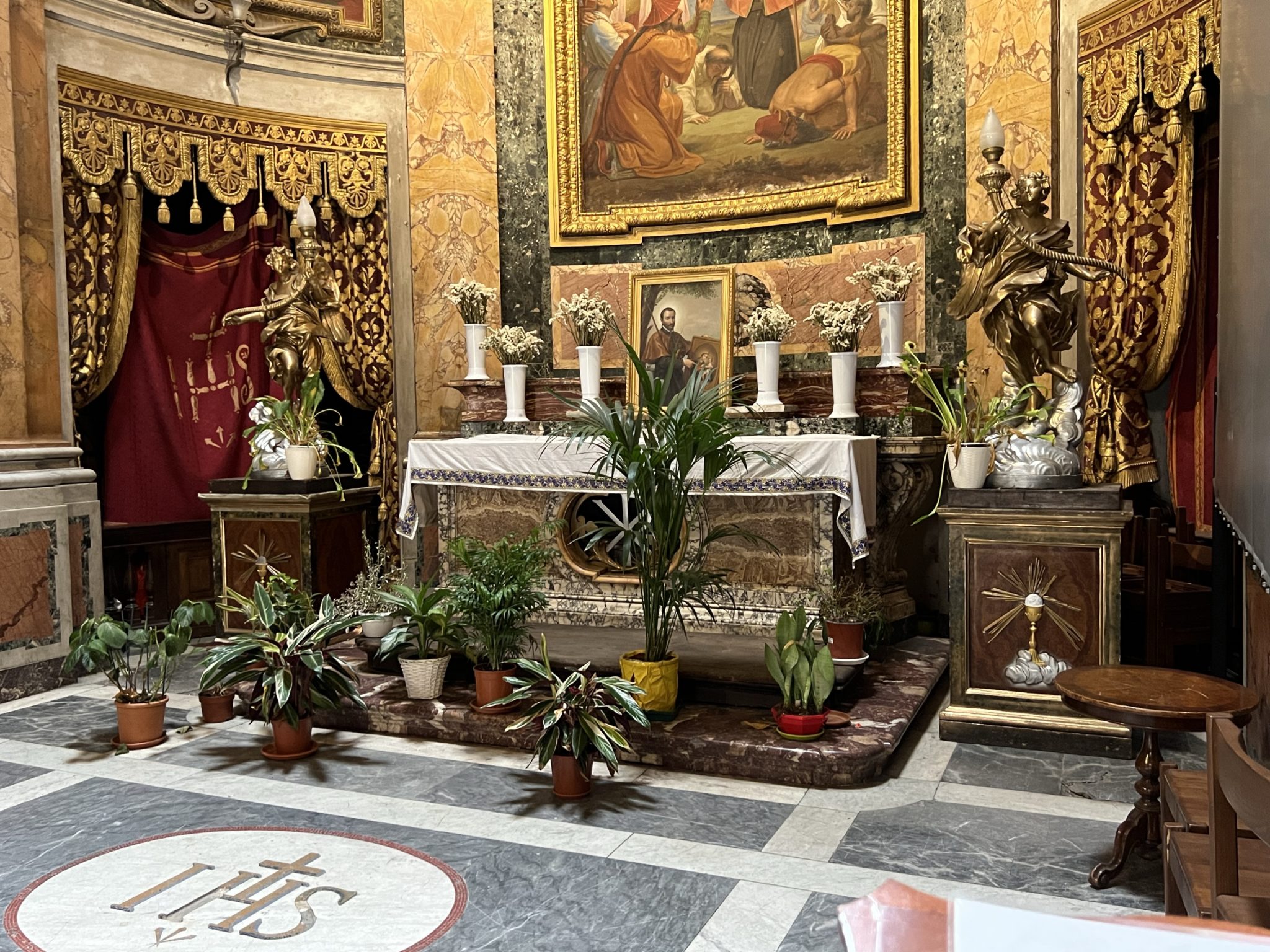
There is a body of a Blessed in the plant stand… er… altar.
Tools for Sunday. The bongo drum is not to be ignored.
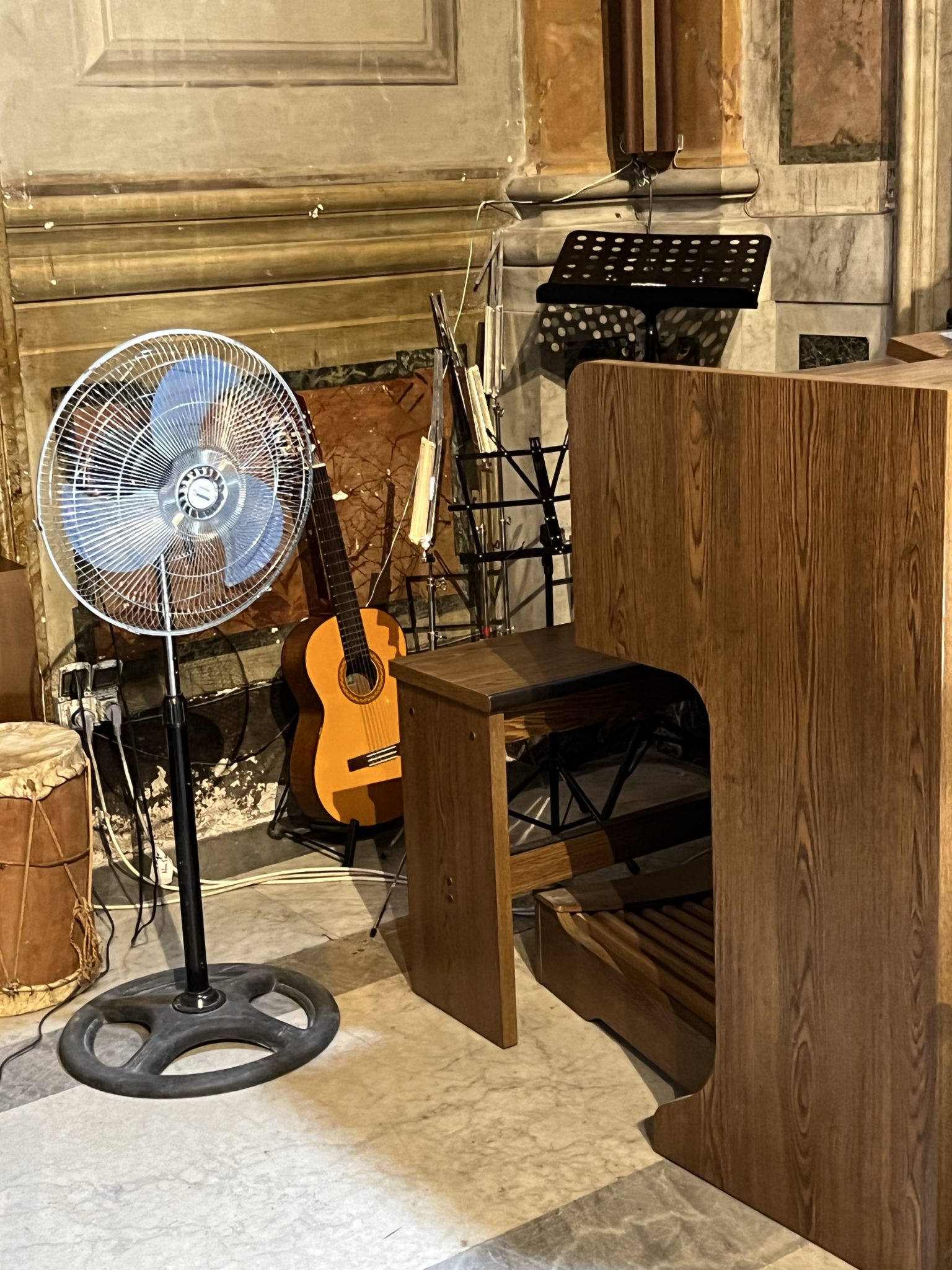
Now we get to another point. As I walked in, this was still on the door of the oratory.
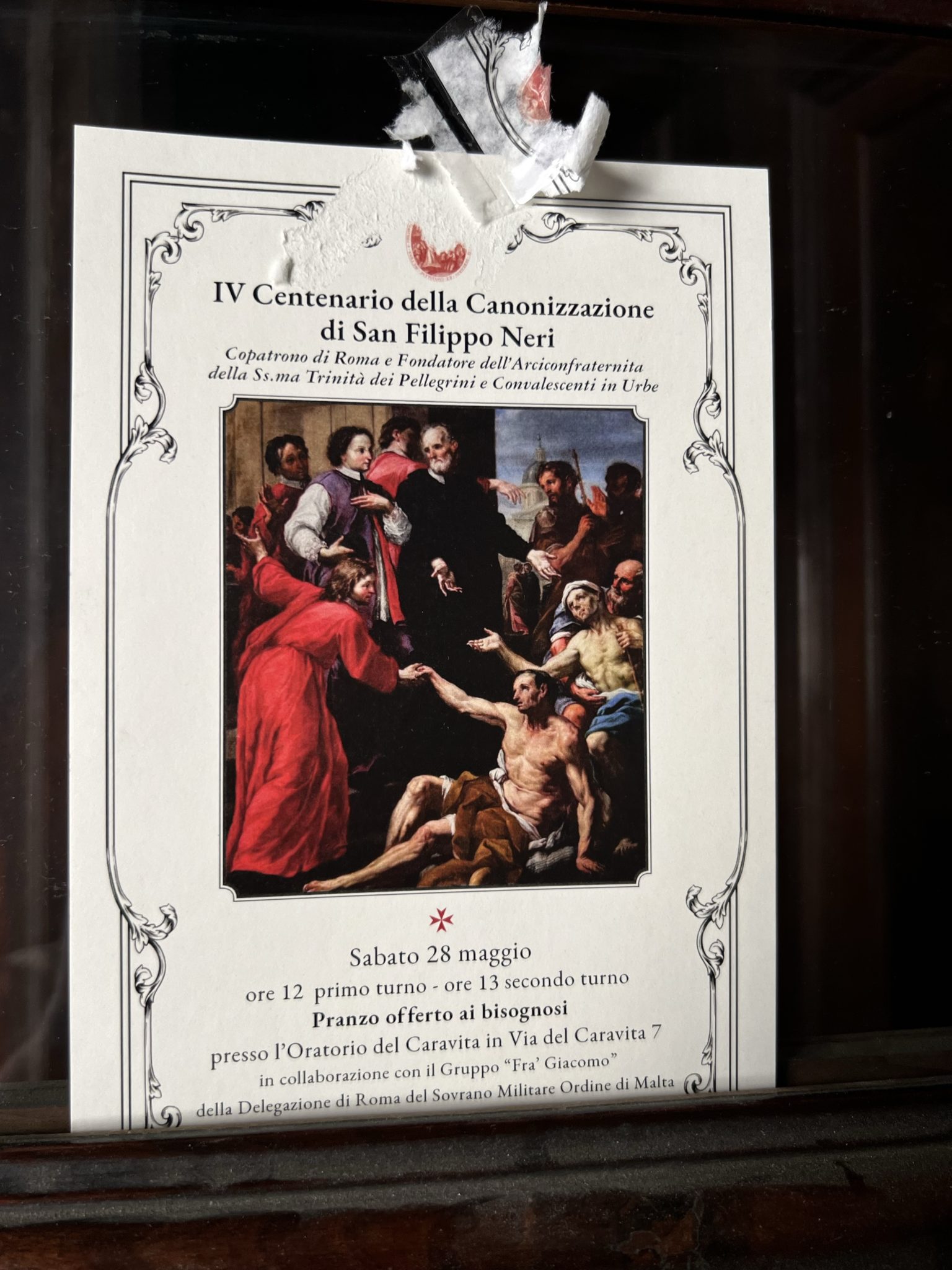
What’s going on? For the 40oth centenary of the Canonization of Sts. Philip Neri and Francis Xavier (and other famous saints) the Confraternity found by “Pippo Bbono” Neri of Ss. Trinità dei Pellegrini sponsored a lunch, in two seatings, for poor people. The place they chose for this was within the Caravita Oratory.
And… to their everlasting credit… the Jesuits let them use the Oratory! Kudos for that, and charity covers a multitude of sins.
I remember years back when I was involved with the Chinese community in Rome that they, having no place meet outside of the church they could use, set up tables in the church so they could eat together and stay close.
At first, that rubbed me the wrong way. I quickly understood it to be the most Roman of approaches. Romanità is flexible, permeable. There are limits, but by Romanità we don’t let the perfect be the enemy of the good. Would the Chinese have desired to meet elsewhere for lunch? Of course.
Would the organizers of the lunch for the poor at Caravita have preferred to hold it somewhere else? Such as in the very refectory of the complex of Ss. Trinità founded by St. Philip attached to their church? The one in the hands of another group that won’t let it go even though it is really needed by the parish? Of course.
The Confraternity that is being revived at Ss. Trinità is serious about being what they were founded to do: perform works of mercy. Lots of confraternities survive in a handful of members who, a couple times in year, put their gear on and carry a banner. That’s not what confraternities were for. They were for action, not show.
I’ve railed away over the years that those who love Tradition have to be the first ones to get involved with works of mercy in their parishes. They must be the first to volunteer and be available. Always. This is authentic Catholic identity of the finest Tridentine stamp. The confraternities, each having different apostolates, exploded in the post-Tridentine, Counter-Reformation. Members of nobility and simple laborers alike belonged side by side. They fed the poor, educated orphans, took care of widows, picked up bodies out of the Tiber River and gave them burial. This apostolic action was a direct result of the identity of the Church expressed in the Council of Trent. This is when new orders sprang up, missionaries sailed off into the blue, veneration of the Eucharist and defense of the priesthood was magnified into an entire world movement expressed in the Baroque.
And they fed the poor.
The folks at gloria.tv posted a snarky attack on the people of Ss. Trinità and their day of feeding the poor at the Caravita Oratory. They said that they desecrated the church by feeding the poor, by “turning it into a restaurant”. They said, I am not making this up, that the people of Ss. Trinità and the Confraternity did this for an ignoble purpose: “La chiesa ristorante allevierà senza dubbio l’odio di Francesco e della sua fazione contro il Rito Romano…. The church restaurant will without question alleviate the hatred that Francis and his ilk have toward the Roman Rite.”
Let’s be clear about something. Libs control everything. When they want to feed the poor, they’ve got all sorts of places to do it in Rome. When traditionalists, who have virtually nothing at their disposal, want to feed the poor, they make due and get the job done.
gloria.tv owes the good people of Ss. Trinità, and its pastor whom they attacked by name, an apology.
I actually have some sympathy with their frustration and some things they post, though I don’t see it very often. There are some aspects that I find a bit off-putting, including their video production values. I want things like gloria.tv to succeed in the right way and for the right reason and not just because they might appeal to anger and frustration – which we admittedly succumb to.
Here’s something to think about.
By posting that nasty post about Ss. Trinità, what did gloria.tv a) hope to accomplish? b) actually accomplish?
Did they help or hurt the overarching cause that we who want our Catholic Tradition are now struggling to maintain under the cruelty of Traditionis custodes?
It seems to me that gloria.tv would do well to bring a camera or two and see what goes on at Ss. Trinità: the church packed on Sundays and feasts with young people from all over the world, young families, regular collection of groceries for a “food bank”, ongoing catechesis. When dozens of people show up for Vespers on a blazing hot Sunday afternoon,… maybe something is happening.
Go to some other churches in Rome’s center and see what’s going on.
It is inevitable, in the face of the demographic sink-hole opening up under the Church that there are going to be declines and massive losses of numbers and properties. Eventually, only the committed will remain, charismatics, converts, traditionalists. They will have to find each other, work with each other. I find this a hopeful vision. It is realistic, too. There will be frictions, of course. But imagine Catholics committed and catechized like converts, who bring in their knowledge of Scripture from other churches and zeal of apostolic action, enthusiastic application to prayer from charismatics who now also have stronger and clearer Marian and Eucharistic devotion, and the grounding, anchoring, energizing force of Traditional Sacred Worship to provide the impetus out of which Catholic life flows and the goal back to which all things are drawn.
One of the people said, “No one has ever poured anything to drink for me.”
l‘Arciconfraternita ha organizzato un pranzo per i bisognosi di Roma presso l’Oratorio del Caravita. L’Arciconfraternita ringrazia i parrocchiani per il contributo mensile che ha reso possibile questo evento seguendo le orme di San Filippo Neri pic.twitter.com/ijUC0liUCI
— SS. Trinità dei Pellegrini (@fssp_roma) June 5, 2022





































One of the curious features of traditionalism in the present epoch seems to be a sort of blurry historical (or rather non-historical) sense prompted by a lack of historical knowledge. In one sense, it bears a sort of stamp of lessened culpability precisely because our history was stolen from us by the modernists. On the other hand, education has perhaps never been so readily available as it is with the advent of the internet.
But on to the facts of the matter! Churches were often used, historically, for various noble enterprises; the Blessed Sacrament would be removed from the tabernacle for the occasion. Concerts are an excellent example. However, far more curious to the 21st century observer is the fact that in the middle ages, public dissections (you read that correctly) would be held by the medical faculties for the purpose of general edification inside of a church building if no other suitable building was available. (I once knew a university professor who would rail against the common trope about the Church being ‘anti-science’ precisely on this point)
Surely feeding the poor would qualify for such a use. But alas, we are no longer our ancestors, and have often grown out of such habits of mind.
The fact that some in the Church today want to reduce the Eucharist to a simple meal doesn’t mean there isn’t a place for a simple meal in the work of the Church.
If using a church is the only way those who seek to feed others can make it happen, then I see no reason to condemn it.
Matthew 25: 31 ff, etc, etc, etc…
Interesting post, Father, much to think about. Kudos to that confraternity!
One of the people said, “No one has ever poured anything to drink for me.”
Very interesting, thanks.
It looks like everything was done in a decent, orderly way that respected the dignity of both the people served and the church being used.
It seems like a case of necessity, much like David and his men eating the Bread of the Presence when on the run, or like Jesus’ disciples eating raw grain as they walked through the fields on the Sabbath.
Historically, yes, the then-pewless naves of churches were used for a fair number of decent purposes during the week, and every so often for something stupid and wrong. That’s one reason that there were clear distinctions drawn between the nave and the actual sanctuary, where the altar was.
Pingback: THVRSDAY EDITION – Big Pulpit